Seed’s of History Podcast
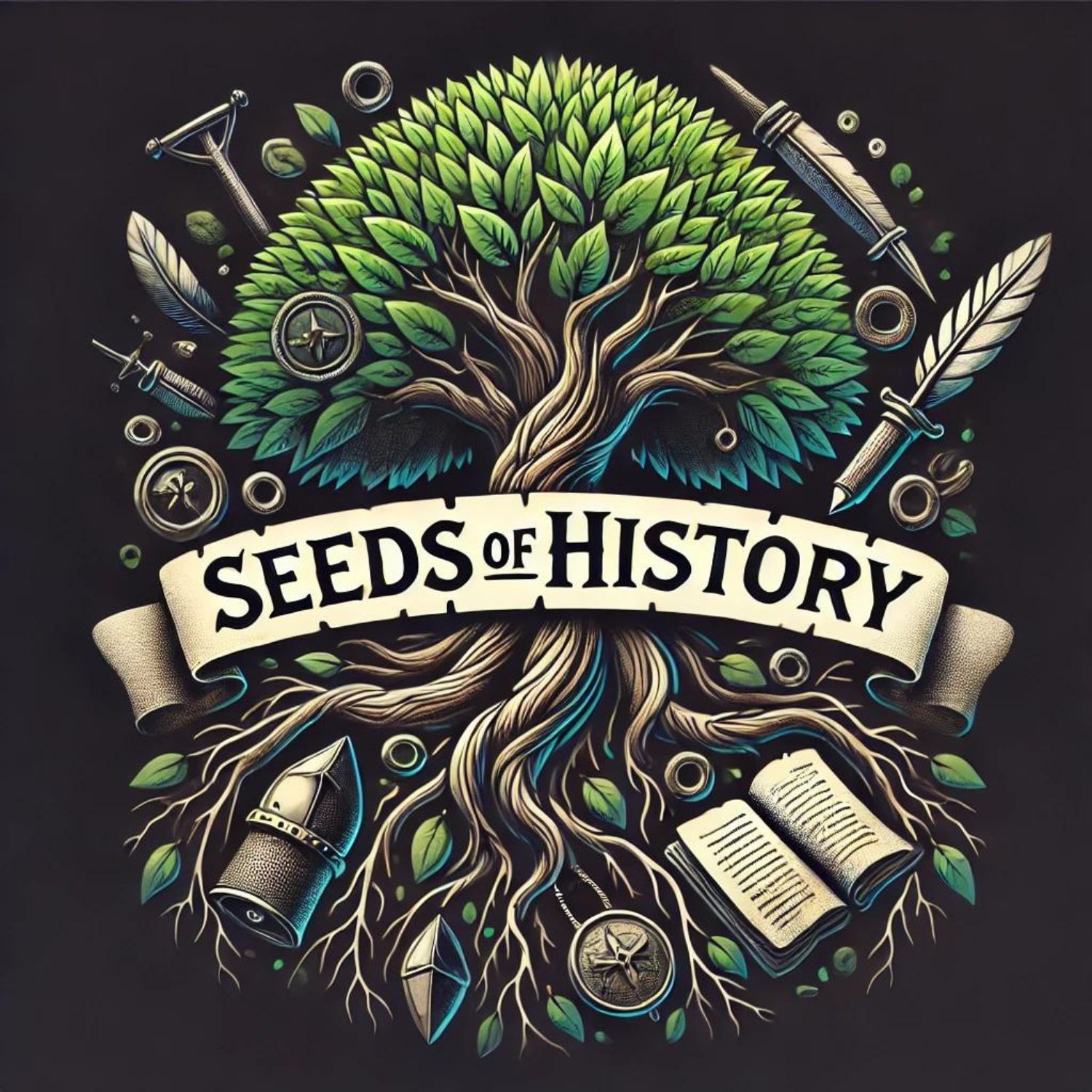
NewWelcome to “Seeds of History,” the podcast where we dig deep into the past to uncover the moments that planted the seeds of our world today. I’m [Your Name], your guide on this journey through time, where we explore the events, ideas, and people who shaped our history in ways you may never have imagined. Each week, we’ll break down key historical moments into bite-sized stories, making it easy for you to connect the dots from then to now. Whether it’s the birth of a revolutionary idea, the rise of a powerful leader, or the spark that ignited a movement, we’re here to unravel the fascinating roots that grew into the branches of modern society. We believe history isn’t just about dates and facts; it’s about the stories, the struggles, and the triumphs that have brought us to where we are today. Together, we’ll explore the untold tales and hidden histories that have left a lasting impact on the world. So, get comfortable, open your mind, and let’s journey back to where it all began. This is “Seeds of History.” podcast weblog
Episodes
Episodes



Wednesday Dec 04, 2024
Anishinaabe Heritage: How Their History Shapes Today’s World
Wednesday Dec 04, 2024
Wednesday Dec 04, 2024
The Anishinaabe, one of North America's most culturally rich and historically significant Indigenous groups, stand as a testament to resilience and adaptability. Known for their spiritual connection to the land, the Anishinaabe—comprised of the Ojibwe, Odawa, and Potawatomi—have navigated centuries of colonial challenges while preserving their unique traditions. Their stories, rooted in oral history, teach profound lessons about harmony with nature, community interdependence, and the power of storytelling. Exploring the Anishinaabe reveals not just their survival but their enduring influence on contemporary thought about environmental stewardship and cultural identity.
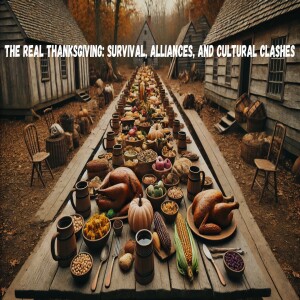


Thursday Nov 28, 2024
The Real Thanksgiving: Survival, Alliances, and Cultural Clashes
Thursday Nov 28, 2024
Thursday Nov 28, 2024
The real story of Thanksgiving is far more complex than the traditional narrative of a harmonious feast between Pilgrims and Native Americans. While the iconic image of shared gratitude endures, the reality reflects a deeper tale of survival, cultural collision, and uneasy alliances. The Pilgrims, after a perilous voyage and a devastating winter, owed much of their survival to the Wampanoag people, who shared vital knowledge of the land and its resources. However, the fragile peace between these two groups existed within a larger context of political strategies, disease epidemics that had decimated Native populations, and eventual conflicts that would forever alter the landscape of America. This is not just a story of a meal but of two worlds colliding, each grappling with change, loss, and the challenges of coexistence. Thanksgiving, as we know it, is a symbol shaped by myth, but the truth offers a richer and more sobering reflection on the foundations of the United States.



Wednesday Nov 27, 2024
Unearthing the Safety Harbor Culture: Florida's Forgotten Ancient Architects
Wednesday Nov 27, 2024
Wednesday Nov 27, 2024
The Safety Harbor culture, a distinctive Native American civilization, flourished along the Gulf Coast of Florida from approximately 900 to 1700 CE. Rooted in the influence of the earlier Weeden Island culture, it is characterized by its elaborate ceremonial centers, complex social hierarchies, and highly skilled craftsmanship. This culture left behind shell mounds, pottery adorned with intricate designs, and artifacts that reflect a deep connection to the coastal environment. Its spiritual practices, including mound-building and burials, reveal a sophisticated understanding of cosmology and a structured belief system. The arrival of European explorers in the 16th century marked a turning point, as diseases and colonization led to its decline. Today, the Safety Harbor culture offers a window into the ingenuity and resilience of the Indigenous peoples of Florida, inspiring efforts to preserve and interpret their legacy through archaeological research and public education.



Tuesday Nov 19, 2024
First Encounters: The Norse Expeditions to North America
Tuesday Nov 19, 2024
Tuesday Nov 19, 2024
First Encounters: The Norse Expeditions to North America explores the groundbreaking Viking ventures to the shores of the New World around 1000 CE, focusing on the settlement at L’Anse aux Meadows in Newfoundland. This historical investigation sheds light on the first known European contact with North America, centuries before Columbus's famed voyage. The Norse expeditions, led by seafarers like Leif Erikson, have long been enshrined in myth and legend, celebrated in sagas that speak of lush lands known as Vinland. Yet, archaeological evidence at L’Anse aux Meadows adds depth to these stories, painting a more complex picture of the Viking experience—one marked by ambition, fleeting settlement, and inevitable conflict with indigenous peoples. By separating fact from fiction, this exploration reveals how these brief encounters set the stage for cultural exchange, clashing worldviews, and the enduring mystery of early transatlantic exploration.
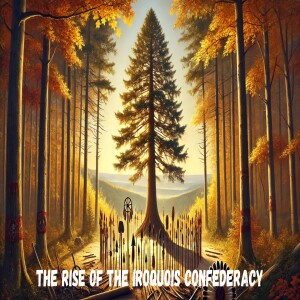


Tuesday Nov 19, 2024
The Rise of the Iroquois Confederacy
Tuesday Nov 19, 2024
Tuesday Nov 19, 2024
The Iroquois Confederacy, or Haudenosaunee, was a groundbreaking alliance among six Native American nations: the Mohawk, Oneida, Onondaga, Cayuga, Seneca, and later, the Tuscarora. United under the Great Law of Peace, this confederation developed an advanced political system that fostered unity and resilience in the face of external threats. Originating in the northeastern woodlands, the Confederacy’s influence extended across vast territories, from the Great Lakes to the eastern seaboard. With the inclusion of the Tuscarora in the early 18th century, the Confederacy evolved into a more expansive and adaptable coalition, bolstering its power and strategic leverage. The Haudenosaunee played a critical role in regional diplomacy, balancing relations with European powers and neighboring Native nations while demonstrating a unique model of governance and intertribal cooperation that would leave a lasting legacy on the political landscape of North America.
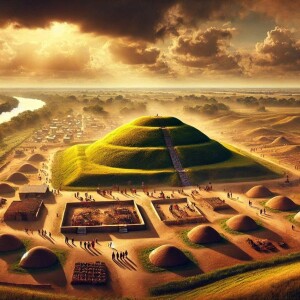


Wednesday Sep 11, 2024
Cahokia: Exploring the Rise and Fall of North America’s Forgotten Civilization
Wednesday Sep 11, 2024
Wednesday Sep 11, 2024
Cahokia, the largest pre-Columbian settlement north of Mexico, stands as a testament to the sophisticated urban and political development of the Mississippian culture. Located near present-day St. Louis, this thriving metropolis, home to as many as 20,000 people at its height, was a hub of trade and culture. Cahokia’s intricate urban planning featured massive earthen mounds used for political, ceremonial, and religious purposes, reflecting a highly organized society with a complex hierarchy. Its far-reaching trade networks connected much of North America, enabling the exchange of goods and ideas. Despite its success, the decline of Cahokia and the Mississippian culture remains a mystery. Possible causes include environmental degradation, resource depletion, and social unrest. The fall of this civilization had significant impacts on the region, reshaping the cultural landscape before the arrival of European settlers. Cahokia’s rise and fall demonstrate the advanced nature of indigenous societies long before European contact.
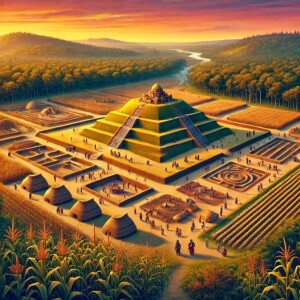


Wednesday Sep 11, 2024
From Ice Age Hunters to Maize Farmers: The Evolution of Early North American Societies
Wednesday Sep 11, 2024
Wednesday Sep 11, 2024
Between the end of the Clovis culture and the rise of the Mississippian civilization, North America experienced profound shifts in both environment and human society. As the Ice Age came to an end and megafauna disappeared, early inhabitants adapted by expanding their diets and foraging for smaller game, plants, and fish. Over millennia, these nomadic bands evolved into more sedentary communities, spurred by innovations like the domestication of crops and the development of pottery. Cultures such as the Adena and Hopewell introduced ceremonial mound-building and established vast trade networks across the continent, connecting distant regions. By 800 CE, this steady progression toward more complex societies culminated in the rise of the Mississippian culture, known for its monumental earthworks, centralized chiefdoms, and reliance on maize agriculture. This period of transition set the stage for the formation of advanced civilizations in North America, long before European contact.
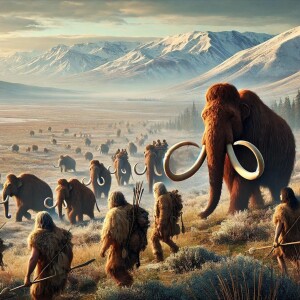


Sunday Sep 08, 2024
The First Americans: Migration, Survival, and Cultural Legacy
Sunday Sep 08, 2024
Sunday Sep 08, 2024
Long before Europeans set foot in the Americas, the continent was already home to diverse cultures with deep roots. The traditional theory suggests the first Americans crossed the Bering Land Bridge during the last Ice Age, migrating from Siberia to Alaska roughly 15,000 to 20,000 years ago. However, new evidence indicates that humans may have arrived even earlier through alternative routes. The coastal migration theory posits that early peoples traveled by boat along the Pacific coast, using marine resources to sustain their journey. Sites like Monte Verde in Chile and fossilized footprints in New Mexico suggest human presence dating back over 20,000 years, challenging the notion that migration occurred solely through Beringia. These early peoples, whether arriving by land or sea, adapted to a variety of climates—from the icy north to the temperate coasts—and developed distinct tools and hunting strategies, such as those associated with the Clovis culture. Over time, regional cultures emerged, setting the stage for the rich cultural diversity that would define Pre-European America. These early innovators laid the foundations for centuries of cultural development, long before European contact.

Seeds of History
Welcome to “Seeds of History,” the podcast where we dig deep into the past to uncover the moments that planted the seeds of our world today.




